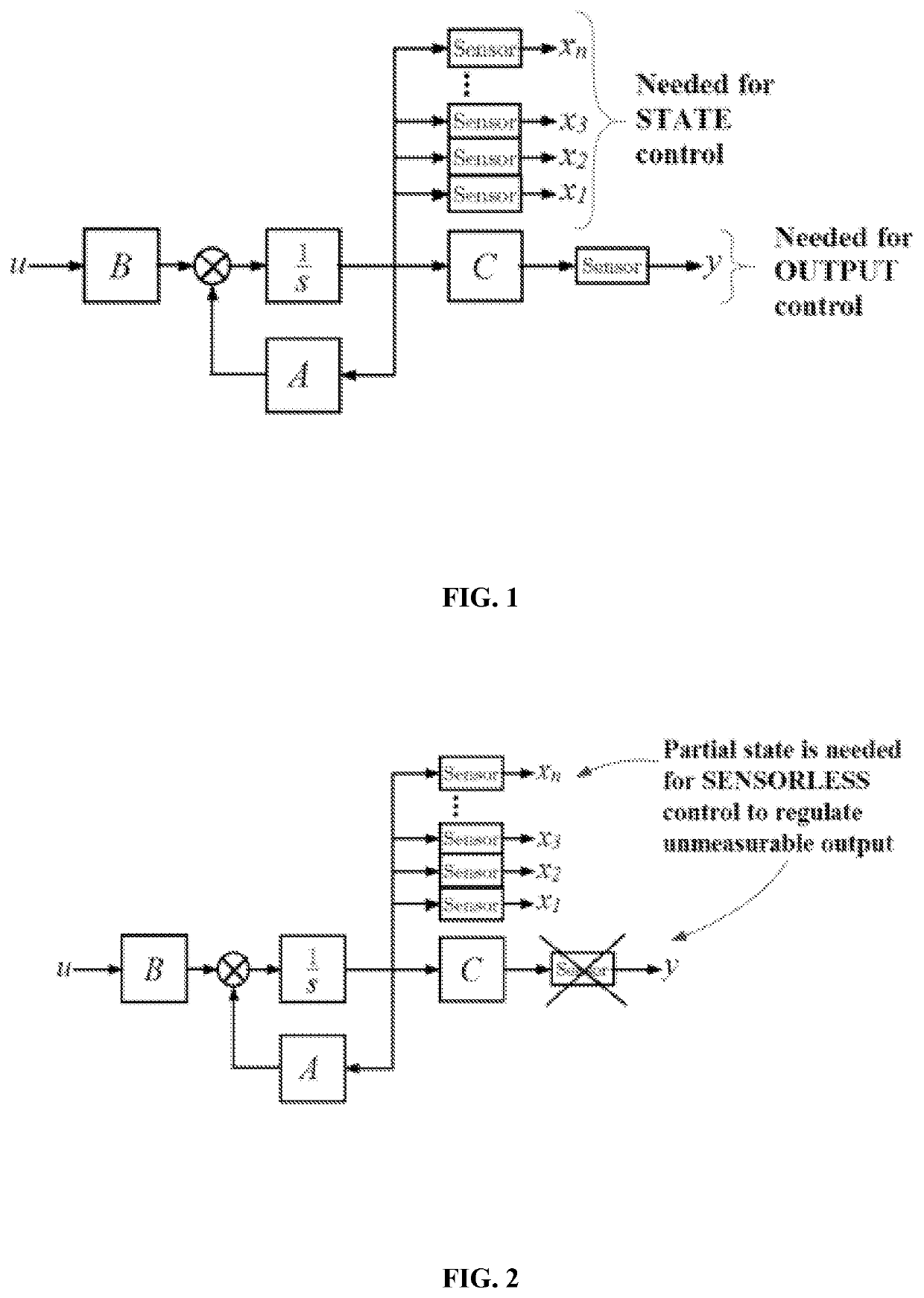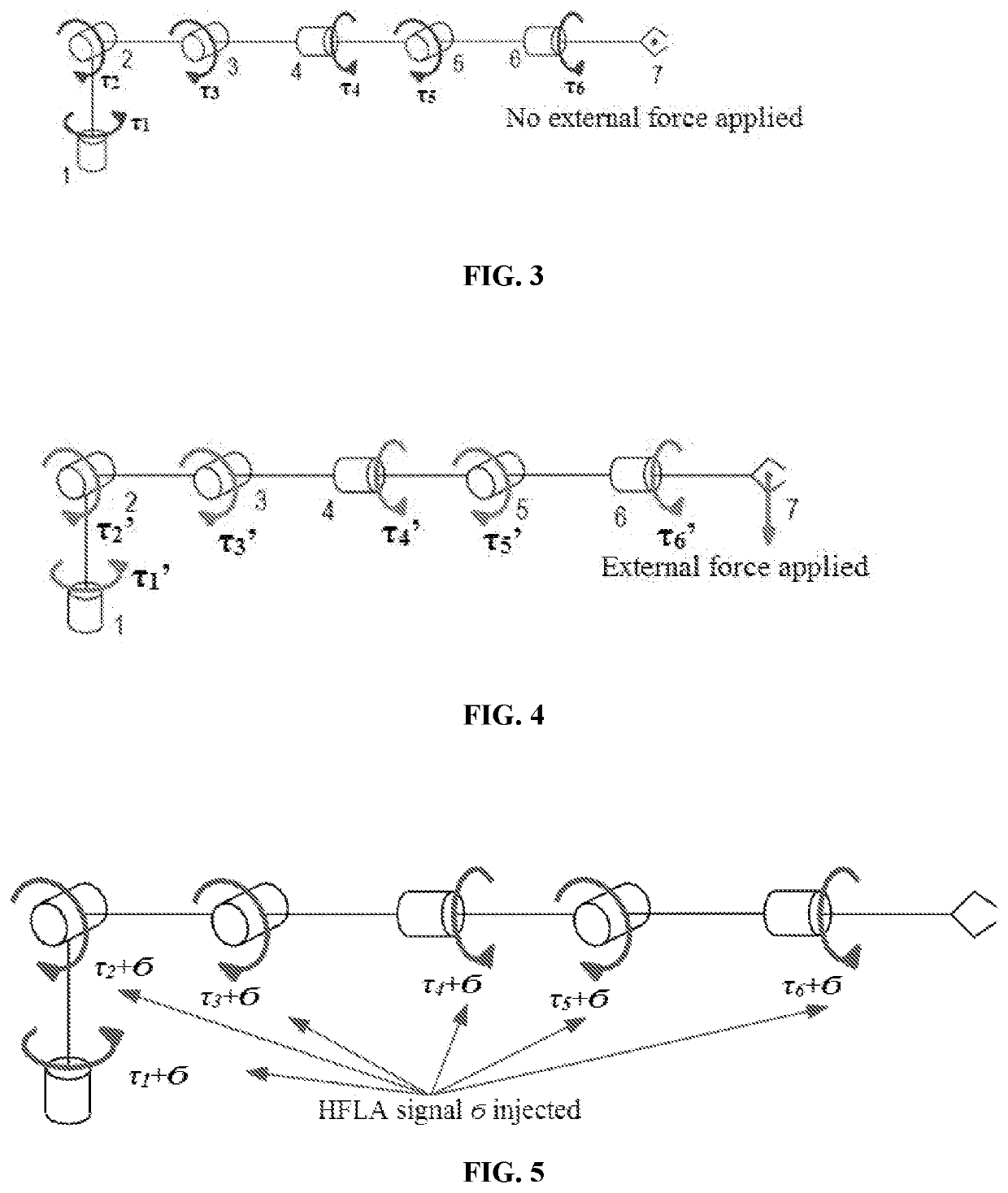Sensor-free force/torque sensing in an articulated electromechanical actuator-driven robot
a technology of electromechanical actuators and sensors, applied in the field of industrial robotics, can solve the problems of less financial expenses, more challenging control based on output control, and inability to achieve desired material processing quality, and achieve the effect of improving the precision of force or torque sensing, saving resources and improving cost-effectiveness
- Summary
- Abstract
- Description
- Claims
- Application Information
AI Technical Summary
Benefits of technology
Problems solved by technology
Method used
Image
Examples
Embodiment Construction
[0036]Now the invention will be explained in more detail with reference to its exemplary embodiments as illustrated on the above-mentioned figures. It should be noted that this detailed description is intended for providing a deeper understanding of the principles of invention and modes of its operation, but not for defining and / or restricting its scope in any way.
[0037]The idea underlying the proposed invention consists in obviating the need for using expensive force / torque sensors in joints of an electromechanical actuator-driven robot comprising one or more links, one or more joints, an end effector, in order to sense one or more forces and / or torques which are applied to the end effector of the robot. These forces or torques on the end effector are mainly caused by interaction of the robot with the environment or manipulated objects.
[0038]As shown above, prior art solutions rely on using force / torque sensors in joints of the electromechanical actuator-driven robot so as to measu...
PUM
 Login to View More
Login to View More Abstract
Description
Claims
Application Information
 Login to View More
Login to View More - R&D
- Intellectual Property
- Life Sciences
- Materials
- Tech Scout
- Unparalleled Data Quality
- Higher Quality Content
- 60% Fewer Hallucinations
Browse by: Latest US Patents, China's latest patents, Technical Efficacy Thesaurus, Application Domain, Technology Topic, Popular Technical Reports.
© 2025 PatSnap. All rights reserved.Legal|Privacy policy|Modern Slavery Act Transparency Statement|Sitemap|About US| Contact US: help@patsnap.com


